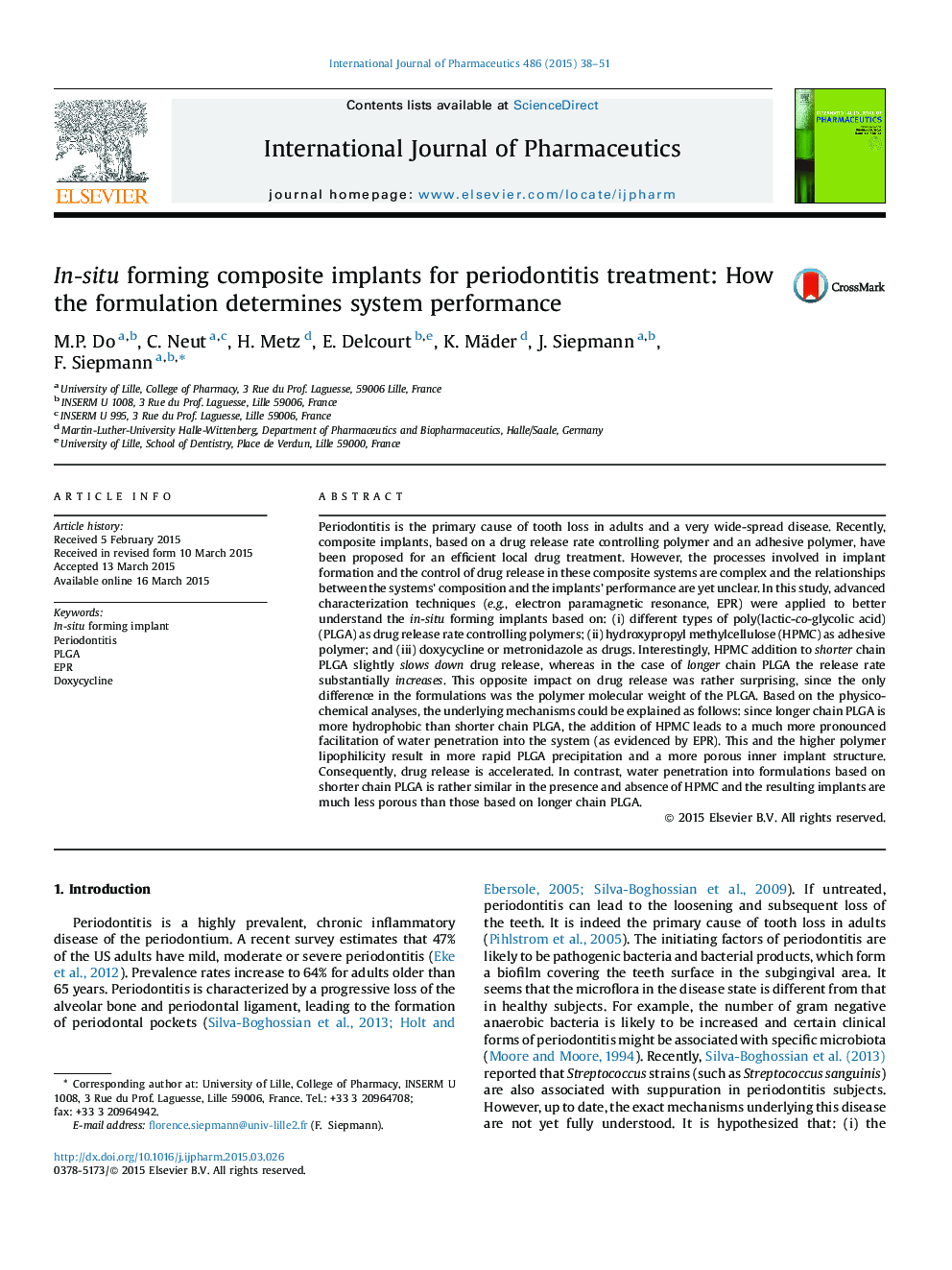| کد مقاله | کد نشریه | سال انتشار | مقاله انگلیسی | نسخه تمام متن |
|---|---|---|---|---|
| 5818895 | 1557338 | 2015 | 14 صفحه PDF | دانلود رایگان |
Periodontitis is the primary cause of tooth loss in adults and a very wide-spread disease. Recently, composite implants, based on a drug release rate controlling polymer and an adhesive polymer, have been proposed for an efficient local drug treatment. However, the processes involved in implant formation and the control of drug release in these composite systems are complex and the relationships between the systems' composition and the implants' performance are yet unclear. In this study, advanced characterization techniques (e.g., electron paramagnetic resonance, EPR) were applied to better understand the in-situ forming implants based on: (i) different types of poly(lactic-co-glycolic acid) (PLGA) as drug release rate controlling polymers; (ii) hydroxypropyl methylcellulose (HPMC) as adhesive polymer; and (iii) doxycycline or metronidazole as drugs. Interestingly, HPMC addition to shorter chain PLGA slightly slows down drug release, whereas in the case of longer chain PLGA the release rate substantially increases. This opposite impact on drug release was rather surprising, since the only difference in the formulations was the polymer molecular weight of the PLGA. Based on the physico-chemical analyses, the underlying mechanisms could be explained as follows: since longer chain PLGA is more hydrophobic than shorter chain PLGA, the addition of HPMC leads to a much more pronounced facilitation of water penetration into the system (as evidenced by EPR). This and the higher polymer lipophilicity result in more rapid PLGA precipitation and a more porous inner implant structure. Consequently, drug release is accelerated. In contrast, water penetration into formulations based on shorter chain PLGA is rather similar in the presence and absence of HPMC and the resulting implants are much less porous than those based on longer chain PLGA.
159
Journal: International Journal of Pharmaceutics - Volume 486, Issues 1â2, 30 May 2015, Pages 38-51
